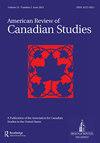不是逻辑,而是经验:加拿大人权法教学
IF 0.4
Q3 AREA STUDIES
引用次数: 0
摘要
摘要加拿大人权法的教学不仅需要向法律学生简单地教授判例法先例、法理原则和立法发展,还需要向学生传授人权想象力。这涉及到关注最终产生和形成反歧视法律的社会环境,如不同的生活和工作条件、示威和公民抗命、关于平等和歧视含义的新论点,以及理解社会科学研究的作用。如果以同理心和清醒的态度撰写人权法律决定,不仅可以在法律课上,而且可以在人权社会科学课程中成为有效的教学工具。学习通过法院和法庭的主要裁决来理解和解释人权的地位,可以对我们当代保护和扩大加拿大人权的方法的优势、弱点和潜力提供有益的见解。本文章由计算机程序翻译,如有差异,请以英文原文为准。
Not Logic, but Experience: Teaching Canadian Human Rights Law
ABSTRACT Teaching Canadian human rights law demands more than simply instructing law students on caselaw precedents, jurisprudential principles, and legislative developments, as important as learning about this legal framework is. It also requires the imparting of a human rights imagination to students. This involves a focus on the social environment that ultimately generates and shapes anti-discrimination laws, such as disparate living and working conditions, demonstrations and civil disobedience, new arguments about the meanings of equality and discrimination, and understanding the role of social science research. Human rights legal decisions, when written with empathy and lucidity, can become effective teaching tools not only in law classes but also in social science courses on human rights. Learning to understand and interpret the place of human rights through the leading rulings of courts and tribunals can offer instructive insights into the strengths, weaknesses, and potential of our contemporary approach toward protecting and enlarging human rights in Canada.
求助全文
通过发布文献求助,成功后即可免费获取论文全文。
去求助
来源期刊

American Review of Canadian Studies
AREA STUDIES-
CiteScore
0.60
自引率
0.00%
发文量
25
期刊介绍:
American Nineteenth Century History is a peer-reviewed, transatlantic journal devoted to the history of the United States during the long nineteenth century. It welcomes contributions on themes and topics relating to America in this period: slavery, race and ethnicity, the Civil War and Reconstruction, military history, American nationalism, urban history, immigration and ethnicity, western history, the history of women, gender studies, African Americans and Native Americans, cultural studies and comparative pieces. In addition to articles based on original research, historiographical pieces, reassessments of historical controversies, and reappraisals of prominent events or individuals are welcome. Special issues devoted to a particular theme or topic will also be considered.
 求助内容:
求助内容: 应助结果提醒方式:
应助结果提醒方式:


